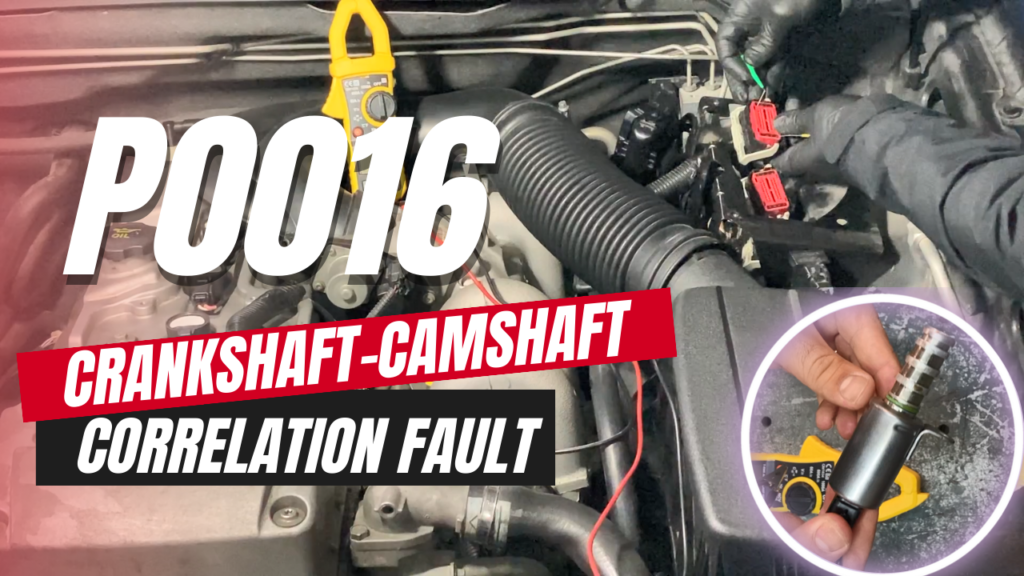| COMPONENT LOCATION |

| GENERAL DESCRIPTION |
The Camshaft Position Sensor (CMPS) is a sensor that detects the compression TDC of the NO. 1 cylinder. The CMPS consists of a hall type sensor and a target on the end of the camshaft. When the target triggers the sensor, the sensor voltage is 5V. If not, the sensor voltage is 0V. These CMPS signal is sent to the ECM and the ECM uses the CMPS signal for synchronizing the sequential fuel injectors.
| DTC DESCRIPTION |
Checking oputput signals from CMP during engine running, if the expected number of cam tooth count is not observed, ECM sets P0391.
| DTC DETECTING CONDITION |
| Item | Detecting Condition | Possible cause | ||||||||||||||
| DTC Strategy |
|
| ||||||||||||||
| Enable Conditions |
| |||||||||||||||
| Threshold value |
| |||||||||||||||
| Diagnosis Time |
| |||||||||||||||
| MIL On Condition |
|
| SPECIFICATION |
| Item | Specification | |
| Output Voltage(V) | Hi : 5.0V | Low : 0.7V |
| Airgap(mm) | 0.5 ~ 1.5 | |
| DIAGNOSTIC CIRCUIT DIAGRAM |

| SIGNAL WAVEFORM & DATA |

Fig.1) Normal waveforms of CMPS
| MONITOR GDS DATA |
| 1. | Connect GDS to Data Link Connector(DLC). |
| 2. | IG “ON”. |
| 3. | Select “DTC” button, and then Press “DTC Status” to check DTC’s information from the DTCs menu. |
| 4. | Read “DTC Status” parameter.
|
| 5. | Is parameter displayed “Present fault”?
|
| TERMINAL AND CONNECTOR INSPECTION |
| 1. | Many malfunctions in the electrical system are caused by poor harness and terminals. Faults can also be caused by interference from other electrical systems, and mechanical or chemical damage. |
| 2. | Thoroughly check connectors for looseness, poor connection, bending, corrosion, contamination, deterioration, or damage. |
| 3. | Has a problem been found?
|
| POWER CIRCUIT INSPECTION |
| ■ Check voltage |
| 1. | IG “OFF” and disconnect CMPS(B2-Exhaust) connector. |
| 2. | IG “ON”. |
| 3. | Measure voltage between power terminal of CMPS(B2-Exhaust) harness connector and chassis ground.
|
| 4. | Is the measured voltage within specification ?
|
| SIGNAL CIRCUIT INSPECTION |
| ■ Check short to battery in harness |
| 1. | IG “OFF” and disconnect CMPS(B2-Exhaust) connector. |
| 2. | IG “ON”. |
| 3. | Measure voltage between signal terminal of CMPS(B2-Exhaust) harness connector and chassis ground.
|
| 4. | Is the measured voltage within specification ?
|
| ■ Check short in harness |
| 1. | IG “OFF” and disconnect CMPS(B2-Exhaust) connector. |
| 2. | Measure resistance between signal and power terminals of CMPS(B2-Exhaust) harness connector.
|
| 3. | Is the measured resistance within specification?
|
| ■ Check short to ground in harness |
| 1. | IG “OFF” and disconnect CMPS(B2-Exhaust) connector and ECM connector. |
| 2. | Measure resistance between signal terminal of CMPS(B2-Exhaust) harness connector and chassis ground.
|
| 3. | Is the measured resistance within specification?
|
| ■ Check open in harness |
| 1. | IG “OFF” and disconnect CMPS(B2-Exhaust) connector and ECM connector. |
| 2. | Measure resistance between signal terminal of CMPS(B2-Exhaust) harness connector and CMPS(B2-Exhaust) signal terminal of ECM harness connector.
|
| 3. | Is the measured resistance within specification?
|
| GROUND CIRCUIT INSPECTION |
| ■ Check open in harness |
| 1. | IG “OFF” and disconnect CMPS(B2-Exhaust) connector and then IG “ON”. |
| 2. | Measure voltage between signal terminal of CMPS(B2-Exhaust) harness connector and chassis ground.(Measurement “A”) |
| 3. | Measure voltage between signal and ground terminals of CMPS(B2-Exhaust) harness connector.(Measurement “B”)
|
| 4. | Is the measured voltage within specification ?
|
| COMPONENT INSPECTION |
| ■ Check CMPS |
| 1. | IG “OFF” and connect GDS. |
| 2. | ENG “ON” and Measure signal waveform at signal terminal of CMPS. Reference signal waveform :
Fig. 1) Normal waveform of CMPS1 & 2 at idle.
|
| 3. | Is the measured signal waveform normal?
|
















